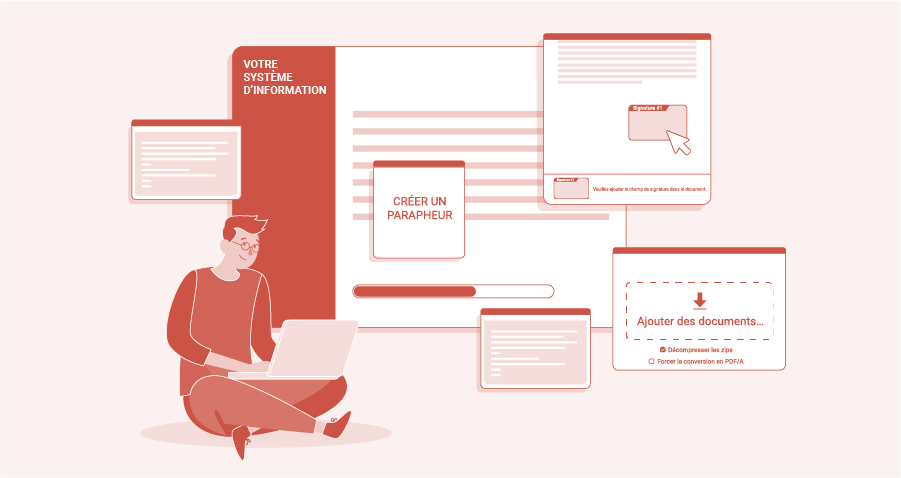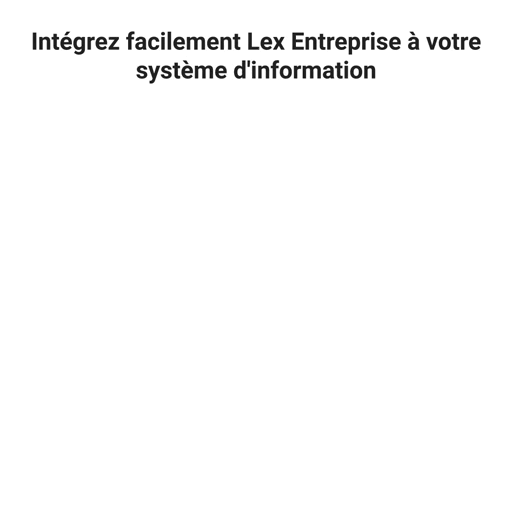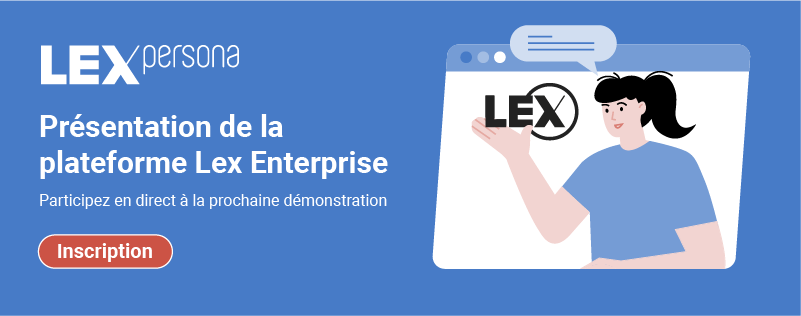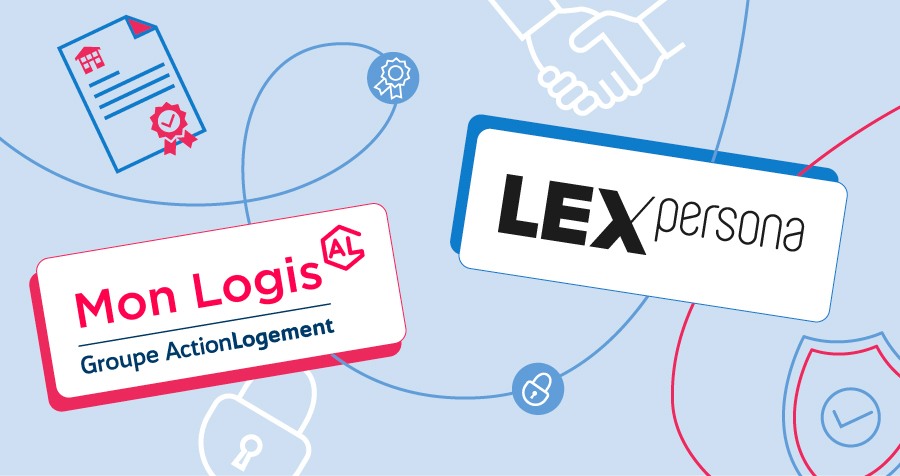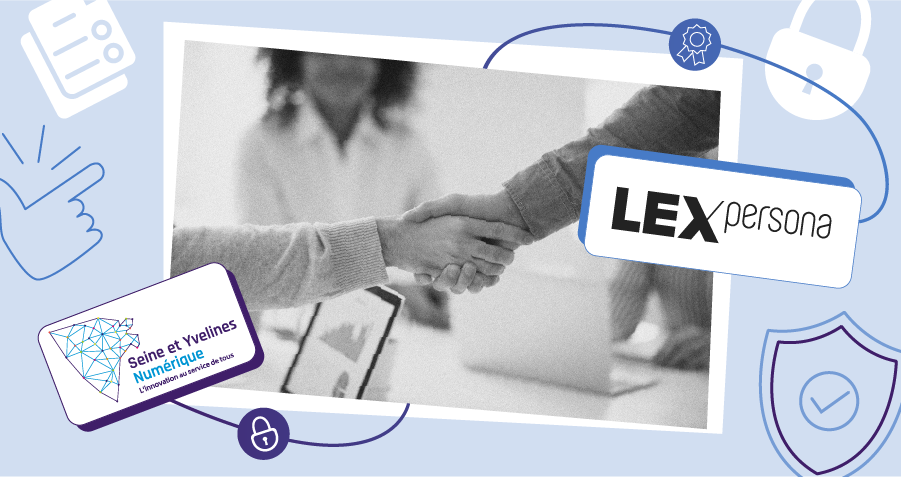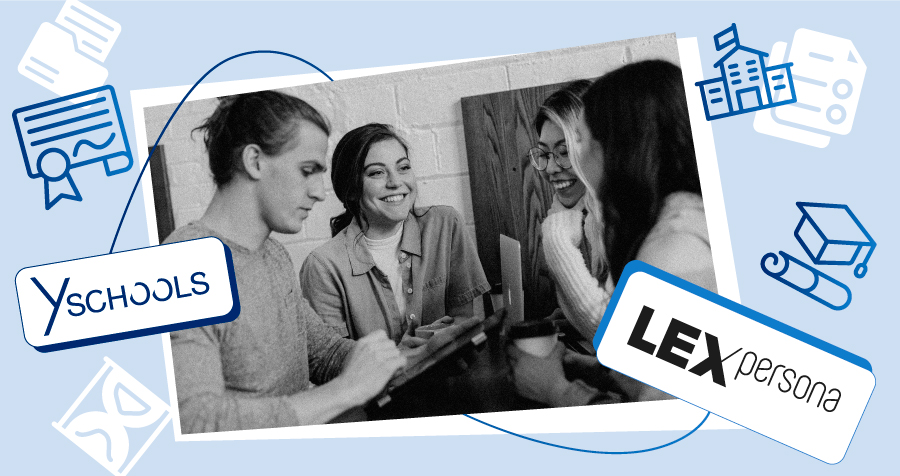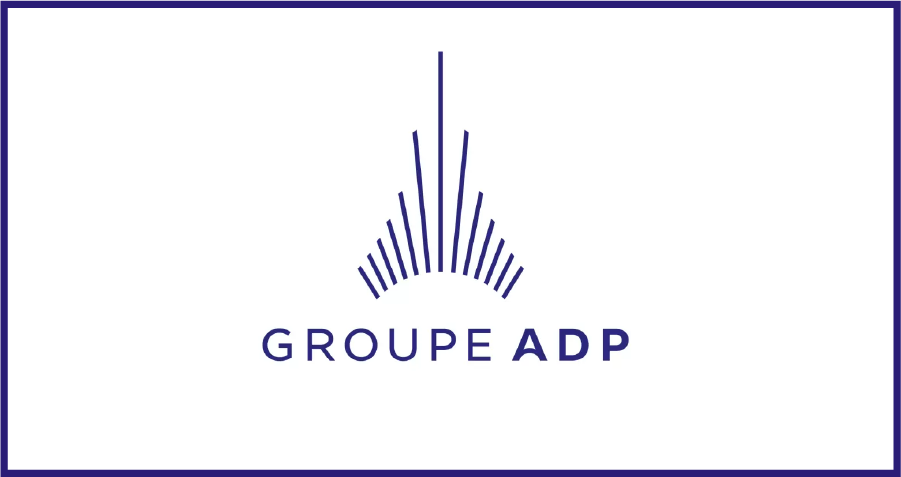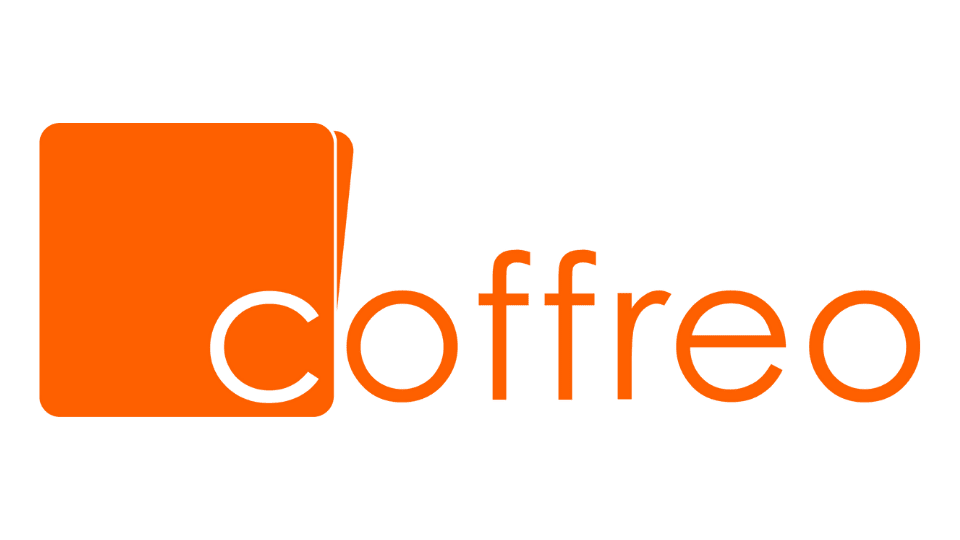Share on :
To integrate electronic signatures seamlessly into business processes, it may be necessary to interface them with existing document solutions (EDM, CRM, contract libraries, etc.).
The integration of electronic signatures should be in two phases: upstream and downstream of the project.
Upstream phase
The idea is to be able to sign or have your documents signed from the applications you use on a daily basis: EDM, Contract Library, CAS, etc.
Employees can sign documents from their usual business software, so you don't have to change their work habits.
What's more, by avoiding a multiplicity of work tools, you optimize your employees' tasks and improve their productivity.
With a view to better user experience, vour customers can sign their documents directly from your website or application. They won't have to wait to receive documents by e-mail or post to finalize their finalize their service subscription or purchase. You create a customer journeysimplified and 100% digital. What's more, the signature is immediate, the risk of purchase abandonment is considerably reduced..
If the business solution is not interoperable with the e-signature tool, the organization concerned must carry out custom development. The aim is to be able to call up an API and fully integrate the electronic signature into the application.
Conversely, if the business solution is interoperable, simply use the connector connector.
Lex Enterprise offers connectors to the market's leading applications.
Downstream phase
What happens to the documents once they've been signed? For this signature process to be seamless, they need to be deposited in an electronic signature system or digital safe. Together with the associated proof files. Again, via a connector.
The Vitam program, for example, can be integrated with Lex Enterprise so that signed documents are automatically automatically deposited in Vitam.
Today, Lex Enterprise integrates with solutions offered by Cecurity and Arkhineo, and is also working on Vitam for public-sector players.
Many customization elements can be added to the specifications. Requests for signatures with the company logo, specific colors and typography, modification of the appearance and texts of emails received by signatories, configuration in several languages, etc.
By integrating Lex Enterprise's electronic signature solution via API, you can automate your processes. You can also personalize the signature service by branding it with your corporate colors.
Integrating electronic signatures with FranceConnect
To have a contractual document signed, you must first be able to identify the signatory. The aim is to be certain that it is indeed Mr or Mrs XYZ who is signing.
Several options are available to identify the signatory. These include using a third-party identity provider such as FranceConnect, the federator of digital identities created by the French government. FranceConnect secures and simplifies connection to over 1,000 online services. Nearly 35 million French citizens now have an account, enabling them to save time in their online procedures.
Simplify the user experience
The operation should be very simple. The signatory receives the document to be signed, and is then directed to FranceConnect to identify themselves.
There, he selects the identity provider they wish to use (your choice of : impots.gouv.fr, ameli.fr, Identité Numérique La Poste, MobileConnect et moi, msa.fr and Alicem), and is then redirected to thesignature tool.
A check is made between the first and last names associated with the FranceConnect account and those created by the person signing. Indeed, it is establish the functional correspondence between the expected and the authenticated signatory.
Lex Persona is the first French publisher to use FranceConnect to identify the author of an electronic signature. This signature benefits from benefits from an advanced level of security of the eIDAS regulation.
For more information, download our white paper " Electronic signatures and their integration: the keys to success ".
Would you like more information?
